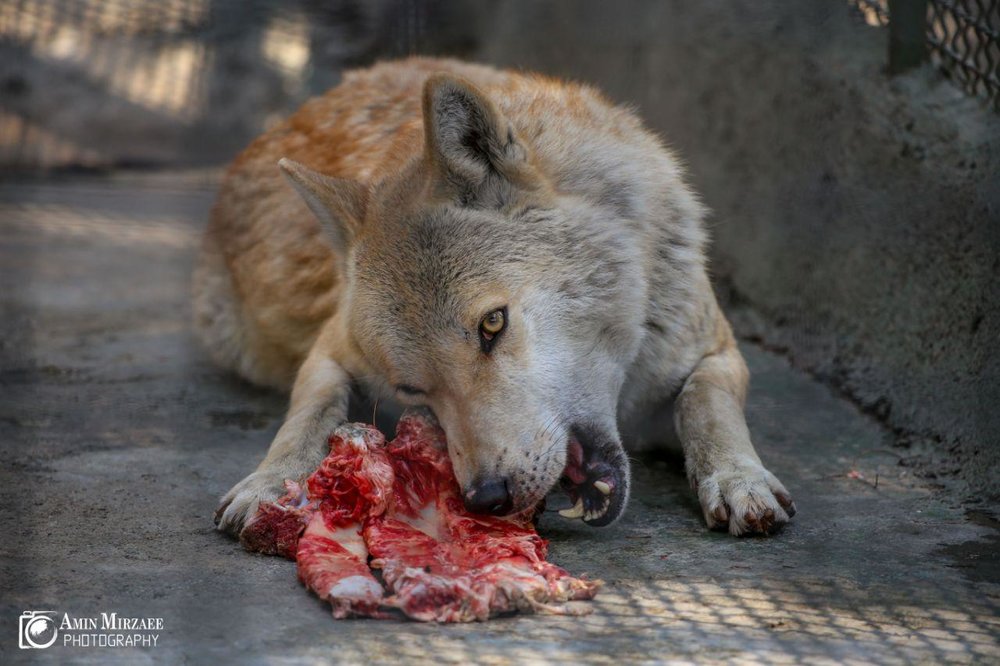Back on the wolves' challenge

Wolves are major predators and their main prey consists of wild sheep, gazelle and small vertebrates. When hungry they will also feed on lizards, vegetables, fruit, and even domestic livestock.
No predator has been persecuted more in recent times than the wolves. News Media have frequent titles about the need for more wolf control to protect livestock. But the response to the wolves' problem has been to eradicate them.
Wolves are trapped, poisoned, and shot by herders in Iran. In addition, Department of the Environment (DoE) noted that unintentional robbery of wolves' cubs has become a great danger especially during spring's days.
What are the consequences of wolves' eradication?
History of population shrinking
The wolf is the largest species of Canidae family which consists of jackals, wolves, and foxes. Wolves once lived throughout the Northern Hemisphere in all but the most extreme tropical and desert habitats.
Amy-Jane Beer in the encyclopedia of Mammals addressed to their challenge, saying "Persecution by humans led to a dramatic decline in wolf numbers worldwide over the last 300 years, and the species (Canis lupus) has become extinct over much of its former range."
She has also pointed to eradication programs: Wolves disappeared altogether from Britain in the 18th century and from Japan and much of western Europe in the following 200 years. In North America the gray wolf was chief target of a prolonged campaign of predator eradication that began soon after the arrival of European settlers. Wolves were shot and trapped in such numbers that by 1940 there were none left in the western United States, and numbers elsewhere were in serious decline.
Similar eradication programs in the former Soviet Union reduced wolf numbers there by about 70 percent. In other parts of Asia, the wolf is now rare.
International Union for Conservation of Nature and Natural Resources (IUCN) also confirmed that the Grey Wolf (Canis lupus) has become extinct in much of Western Europe, in Mexico and much of the USA, and their present distribution is more restricted; wolves occur primarily but not exclusively in wilderness and remote areas.
Their original worldwide range has been reduced by about one-third by deliberate persecution due to depredation on livestock and fear of attacks on humans as IUCN said.
Wolves' wickedness or importance?
Beer affirmed, " Recent studies of wolf populations have convinced biologists that far from being a scourge of the land, wolves are in fact an important stabilizing influence on wilderness ecosystems. Such discoveries, along with a growing sense toward wildlife in general, have prompted several wolf conservation projects around the world. Several European populations have now been saved from extinction."
In many countries such as Iran, people aren't happy to share their land and livestock with wolves so most individuals have been shot or trapped. It is important to know, if we cannot eradicate a predator that is causing losses, we must learn to live with it.
Not surprisingly, cattle ranchers or herders have developed an array of management actions to cut down on losses e.g. sheep can be kept in buildings at lambing time instead of being left out on the range where wolves can attack. Guard dogs also can be kept with the flock for protection.
Some people considered wolves as the greatest human's enemy, transmission of rabies virus is also a big challenge but most people don't know that it is rare compared to feral and stray dogs.
Wolves that prey upon rodents and other small vertebrates provide an economically valuable service for human beings, regarding to non-effective approach of trapping.
On the other hand, hunting ungulates and rodents by wolves yields another valuable service because of controlling the populations and also diseases. Investigations confirmed that medium-sized carnivores such as feral dogs are important hosts, reservoirs and vectors of the rabies virus and wolves considered as the last hope for omitting them in the absence of large predators such as leopards.
Cubs' eradication
Not all cubs of wolves are born in a den. Some are born in a hollow sheltered from the wind or in a nest flattened in long grass. Wolves are keeping their new born pups out of sight but some curious people in Iran picked them up either unknowingly or knowingly and it causes a great threat.
Young wolf cubs need to feed every few hours. Many do not survive and human-raised wolf pups become attached to their owners not to the wild. Therefore, the remaining wild populations become more vulnerable. The population shrinkage almost proved disastrous for the wolves.
Hybridization
Marzieh Asadi Aghbolaghi and her colleagues in their research titled " Low gene flow between Iranian Grey Wolves (******Canis lupus*****) and dogs documented using uniparental genetic markers" pinpointed to the populations' decline and hybridization problem.
In fact, evidence suggests limited gene flow between wolves and dogs in Iran. However, possible factors promoting hybridization are still present in the country and should not be neglected in the future management of the wild species.
Good wolf or bad wolf?
Wolves have long been the subject of mysterious stories. Old, wounded or sick wolves are often turned out of the pack to become lone wolves. Young wolves may also leave to start their own life. In fact, lone wolves are much more dangerous for cattle because they cannot reject an easy food such as sheep.
Farmers and cattle rangers shoot or poison wolves because they steal sheep and other livestock and spread disease. But human beings must understand, they cannot change just one thing in an ecosystem. Removing wolves in some ecosystems may cause worse problems than learning to coexist with them.
Leave a Comment